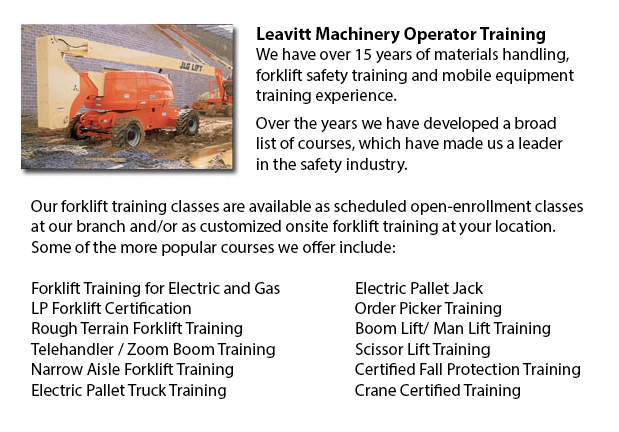
St Catharines Boom Lift Certification - Utilizing elevated work platforms allow for maintenance operations and work to be carried out at elevated work heights which were otherwise unreachable. Boom Lift Certification Training educates workers about the safe operation of scissor lifts and boom lifts.
Despite the array in lift style, applications and site conditions, all lifts have the possibility for serious injury or death when not safely operated. Electrocution, falls, crushed body parts, and tip-overs can be the tragic result of wrong operating procedures.
In order to prevent aerial lift incidents, boom lift operators have to be trained by qualified workers in safely operating the particular kind of aerial lift they would be making use of. Aerial lifts must never be modified without the express permission of the manufacturer or other recognized entity. If you are leasing a lift, make sure that it is maintained correctly. Prior to using, controls and safety devices should be checked to ensure they are working correctly.
Operational safety procedures are important in avoiding incidents. Operators should not drive an aerial lift with the lift extended (even though a few are designed to be driven with the lift extended). Set outriggers, if available. Always set brakes. Avoid slopes, but when necessary make use of wheel chocks on slopes that do not go beyond the manufacturer's slope restrictions. Follow manufacturer's weight and load limitations. When standing on the boom lift's platform, make use of full-body harnesses or a safety belt with a two-foot lanyard tied to the boom or basket. Fall protection is not required for scissor lifts that have guardrails. Never climb or sit on guardrails.
The boom lift certification course provides instruction in the following areas: training and certification; safety tips in order to prevent a tip-over; slopes and surface conditions; inspecting the travel path & work area; stability factors; other guidelines for maintaining stability; leverage; weight capacity; testing control functions; pre-operational check; mounting a motor vehicle; safe operating practices; power lines and overhead obstacles; safe driving procedures; PPE and fall protection; making use of harnesses and lanyards; and avoid falling from platforms.
The trainee who is successful would know the following: pre-operational inspection procedures; training and authorization procedures; factors affecting the stability of scissor and boom lifts; how to prevent tip-overs; how to utilize the testing control functions; how to utilize PPE and fall prevention strategies.
-
St Catharines Heavy Equipment Training Schools
St Catharines Heavy Equipment Training Schools - When selecting an operator training course, there are a lot of heavy equipment training schools to choose from. To be able to ascertain the qualifications you will attain, it is very important to explo... More -
St Catharines Heavy Equipment Operator Training
St Catharines Heavy Equipment Operator Training - Heavy equipment operator training facilities that offer quality standards within the business, offering field performance work and additional machine training are really sought after training features... More -
St Catharines Forklift Training Programs
St Catharines Forklift Training Programs - Are you looking for work as a driver of a forklift? Our regulatory-compliant mobile equipment operator training offers instruction in kinds of forklifts, pre-shift check, fuel kinds and handling of fuels, an... More -
St Catharines Heavy Equipment License
St Catharines Heavy Equipment License - A heavy equipment license can be obtained by taking a certification and preparation course at a private training school or a vocational school. This license would qualify you to operate various types of heavy e... More -
St Catharines Overhead Crane Safety Training
St Catharines Overhead Crane Safety Training - Overhead crane safety training equips operators with skills and knowledge regarding crane safety precautions, accident avoidance, materials handling, and equipment and stock protection. Trainees will lea... More -
St Catharines Scissor Lift Training
St Catharines Scissor Lift Training - Scissor lifts should be operated proficiently to be able to protect the safety of the equipment and the wellbeing of others within the workplace. Operators who are skilled are trained to drive the specific type o... More -
St Catharines Telescopic Training
St Catharines Telescopic Training - Telescopic Handlers are a kind of forklift, normally known as telehandlers. This machine has been increasing in popularity due to its greater lift heights and its versatility. It is often preferred over the convent... More -
St Catharines Crane Operator Certification
St Catharines Crane Operator Certification - Crane Operator Certification is a process which enables people to earn a certificate in order to operate specific types of cranes. Certification involves classroom learning, hands-on practice and an abilit... More

Forklift Certification St Catharines
TOLL FREE: 1-888-254-6157
St Catharines, Ontario
forkliftcertificationstcatharines.com/
Email Us
About Us


